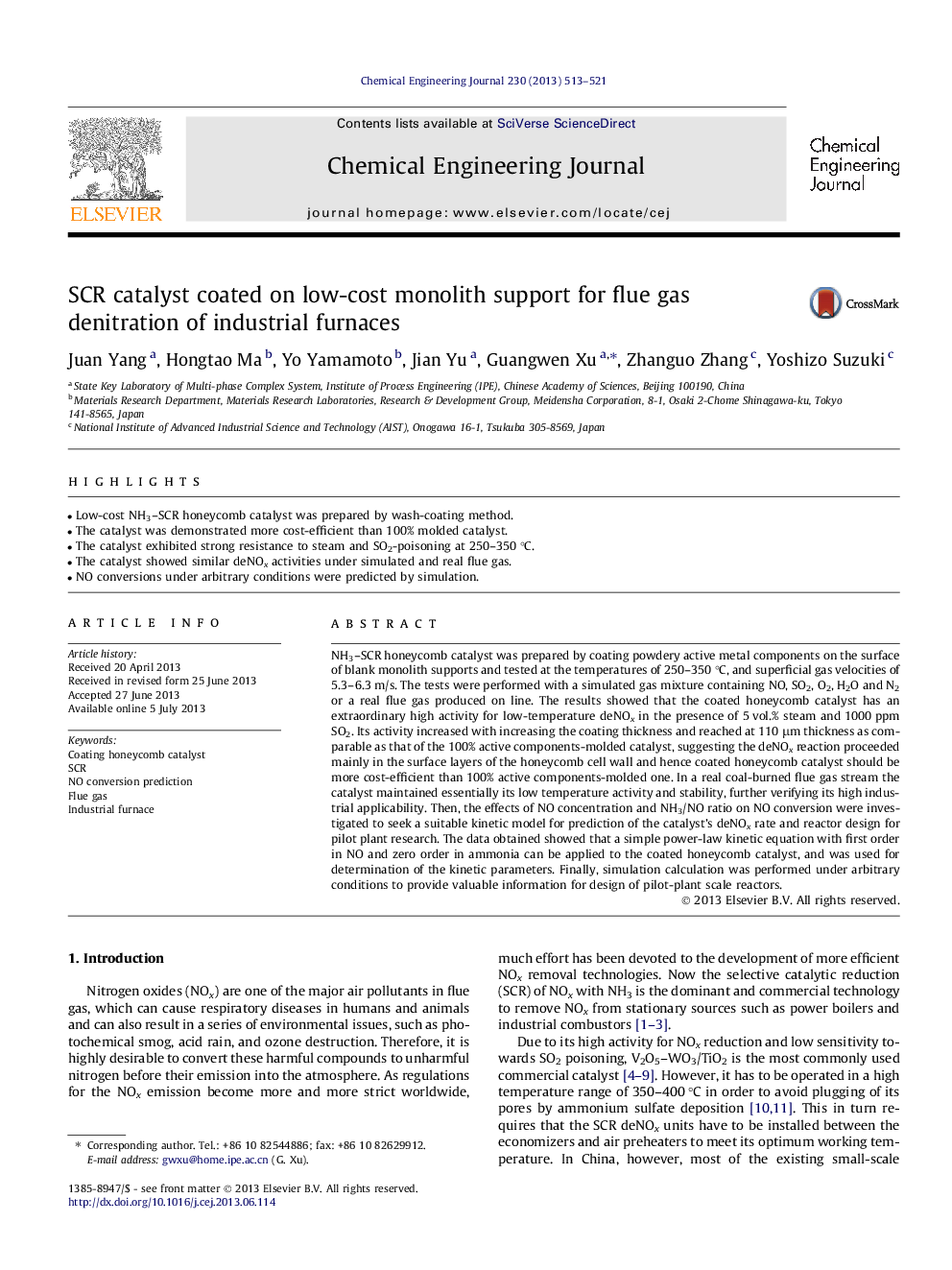| Article ID | Journal | Published Year | Pages | File Type |
|---|---|---|---|---|
| 148400 | Chemical Engineering Journal | 2013 | 9 Pages |
•Low-cost NH3–SCR honeycomb catalyst was prepared by wash-coating method.•The catalyst was demonstrated more cost-efficient than 100% molded catalyst.•The catalyst exhibited strong resistance to steam and SO2-poisoning at 250–350 °C.•The catalyst showed similar deNOx activities under simulated and real flue gas.•NO conversions under arbitrary conditions were predicted by simulation.
NH3–SCR honeycomb catalyst was prepared by coating powdery active metal components on the surface of blank monolith supports and tested at the temperatures of 250–350 °C, and superficial gas velocities of 5.3–6.3 m/s. The tests were performed with a simulated gas mixture containing NO, SO2, O2, H2O and N2 or a real flue gas produced on line. The results showed that the coated honeycomb catalyst has an extraordinary high activity for low-temperature deNOx in the presence of 5 vol.% steam and 1000 ppm SO2. Its activity increased with increasing the coating thickness and reached at 110 μm thickness as comparable as that of the 100% active components-molded catalyst, suggesting the deNOx reaction proceeded mainly in the surface layers of the honeycomb cell wall and hence coated honeycomb catalyst should be more cost-efficient than 100% active components-molded one. In a real coal-burned flue gas stream the catalyst maintained essentially its low temperature activity and stability, further verifying its high industrial applicability. Then, the effects of NO concentration and NH3/NO ratio on NO conversion were investigated to seek a suitable kinetic model for prediction of the catalyst’s deNOx rate and reactor design for pilot plant research. The data obtained showed that a simple power-law kinetic equation with first order in NO and zero order in ammonia can be applied to the coated honeycomb catalyst, and was used for determination of the kinetic parameters. Finally, simulation calculation was performed under arbitrary conditions to provide valuable information for design of pilot-plant scale reactors.
